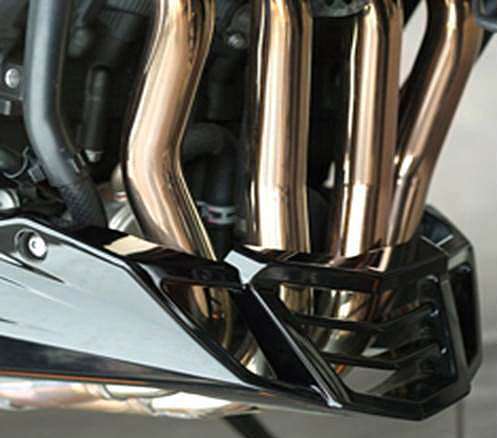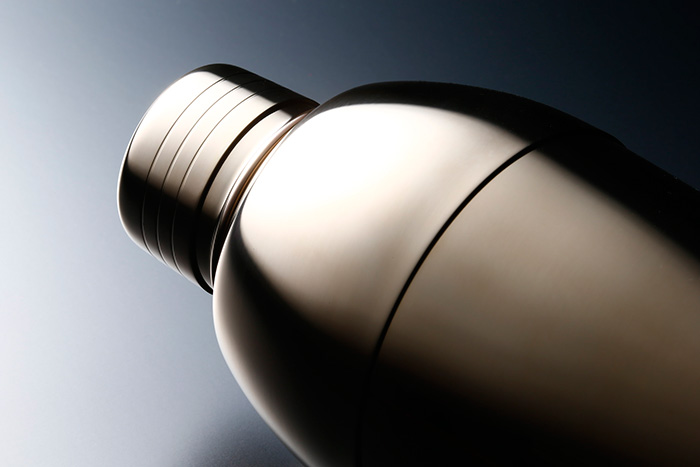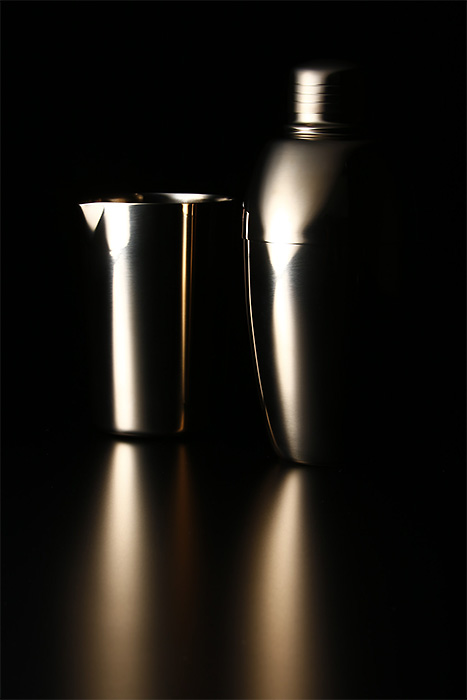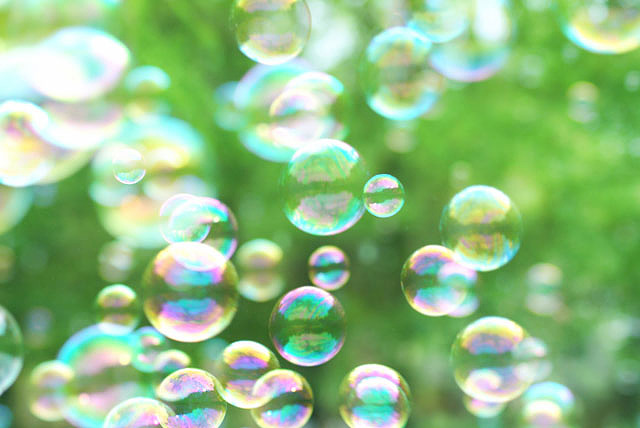The Relationship Between Nano-film Coating and Soap Bubbles
Introducing the stories behind Yamaha Motor's technologies.

The reason the exhaust pipes of the MT-09 and the MT-09 Tracer (#1) have a distinct depth to their luster is the Yamaha-exclusive SixONy “nano-film coating” used on them. This nano-film has a thickness of 20–150 nanometers, meaning it is extremely thin at about 1/10,000th of a millimeter. Nonetheless, it has excellent heat and corrosion resistance as well as a jewel-like shine. Also, by adjusting the molecular distribution in the manufacturing process, the coating (film) can be given many different hues and shades, all with a deep luster.
Motorcycle exhaust pipes are usually made of stainless steel and are generally given a finish to inhibit rust and corrosion. However, when this kind of surface becomes heated to temperatures in excess of 400 °C while exposed to the air, it hastens oxidation, causing discoloration and sometimes leading to rusting. In some cases, pipe covers are used to hide the discoloration or multi-layer exhaust pipes are used to better dissipate heat, but these are not favorable solutions from the standpoint keeping vehicle weight down. Having simple exhaust pipes with a nice luster is something motorcycle enthusiasts have long hoped for. That is what prompted Yamaha to take on the new challenge of developing an exhaust pipe with excellent heat resistance that also stays beautiful with no heat-induced discoloration.
While studying the compositional elements of jewels such as rock crystals, rubies, sapphires and emeralds, studies were also conducted focusing on the potential of ceramics with excellent corrosion and heat resistance.
Ceramics normally have a crystalline structure. But after heating them to the melting point and then cooling them rapidly, they harden into a non-crystalline, or in other words, “amorphous” disordered solid. As with glass, these amorphous ceramics are transparent and resist heat accumulation; it was these characteristics that convinced Yamaha to explore the possibilities of ceramic films.
Next, atomic structure analysis and experimentation was undertaken to find a method for coating the surface of an exhaust pipe with such an amorphous ceramic material. Eventually, a method was established: the object to be coated, such as an exhaust pipe, was placed in the processing oven. Then, by creating a vacuum, silicon, oxygen and nitrogen molecules inside the oven take on a plasma state and become easier to attach to the object through ionization. Finding this process made it possible to create a super-thin film of amorphous ceramic on the object, giving it excellent resistance to heat, corrosion and abrasion. Furthermore, the coating film can be made colorless and transparent, or made to emit a variety of different colors.
Light has different wavelengths; when the peaks of two wavelengths line up (in phase), the wavelength doubles in strength (constructive interference), but if one wave’s peaks line up with another wave’s valleys (troughs), they cancel each other out (destructive interference). This meeting of two different wavelengths of light produces what is known as “interference color.” Sunlight and/or other visible light is reflected off the nano-film surface but some of the light is also reflected between the film and the metal object it coats. The meeting of the two light sources is what produces interference color. This is the same phenomenon that makes a soap bubble emit the colors of the rainbow. When wind blows a soap bubble, the thickness of the film of soap water that forms the bubble changes, and makes the bubble emit interference colors (#2). By varying the thickness of the nano-film coating and giving it the right ratios of oxygen and nitrogen, the refraction of the light can be controlled. This makes it possible to create film that is transparent or film that emits a variety of different colors.
Since this nano-film coating method was first used successfully on the FZ1 and FZ1 Fazer models in 2007 (#3), it has subsequently been used on models that include the SR400 (since 2010) and the MT-09. It has even been used on kitchenware. In September 2015, a gold-colored cocktail shaker (#4) was introduced at a major department store in Shinjuku, Tokyo as a “nano-film coated product.” Besides this, SixONy coating has the potential to be commercialized in a wide range of products, from tableware and kitchenware to automotive body parts.






